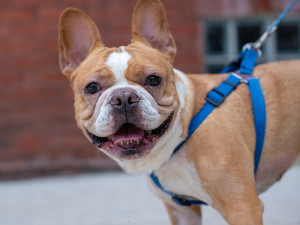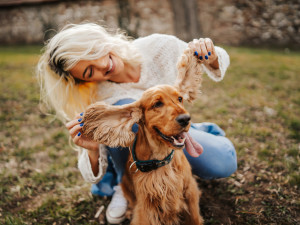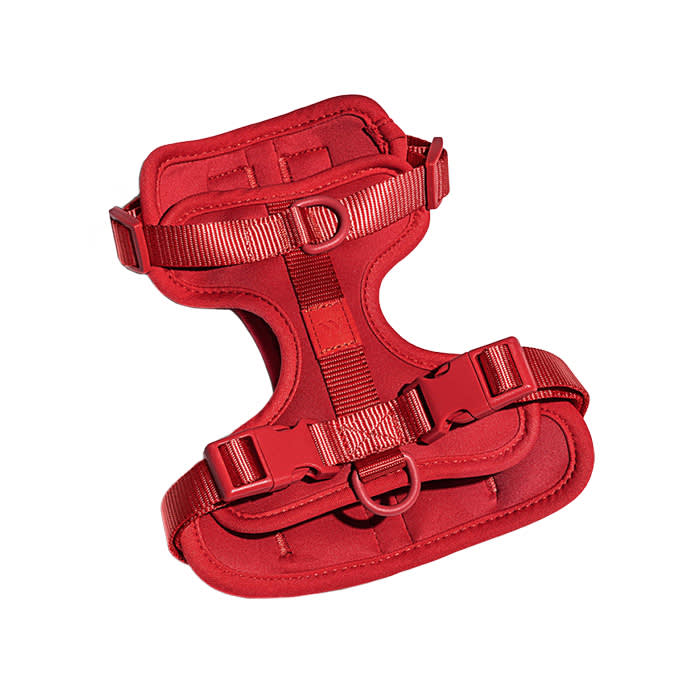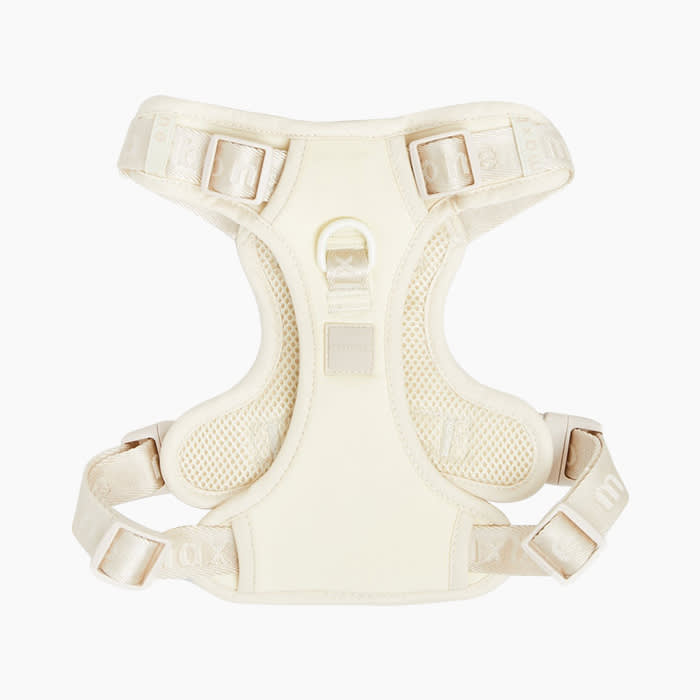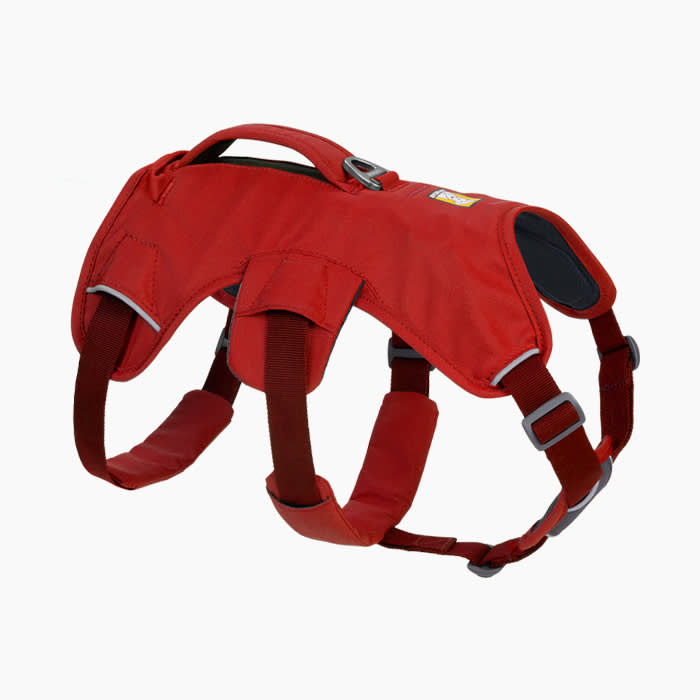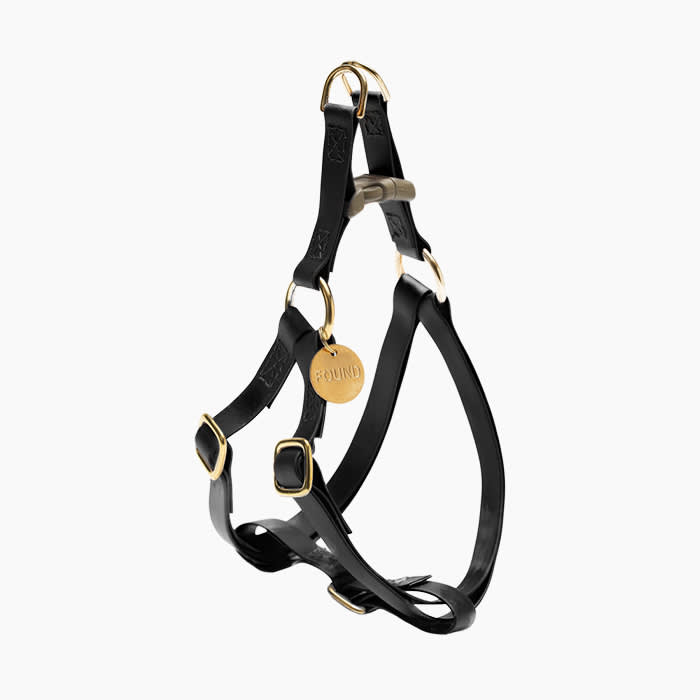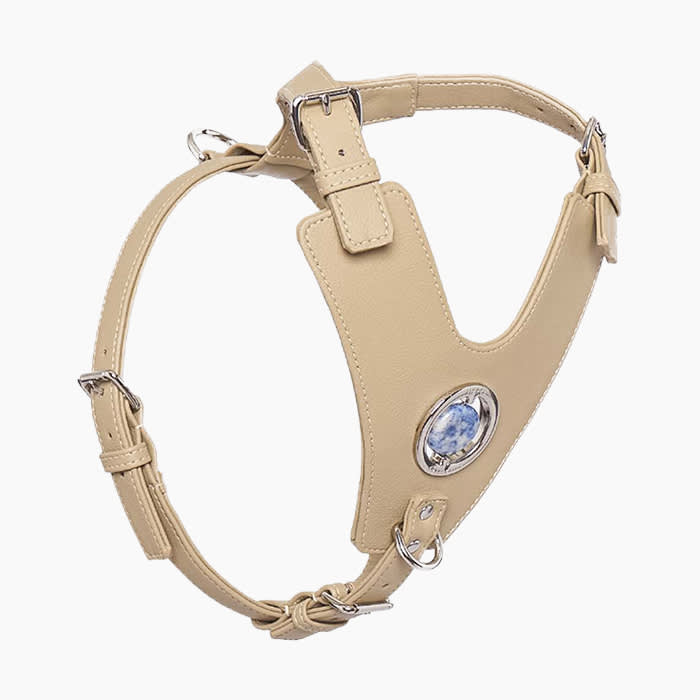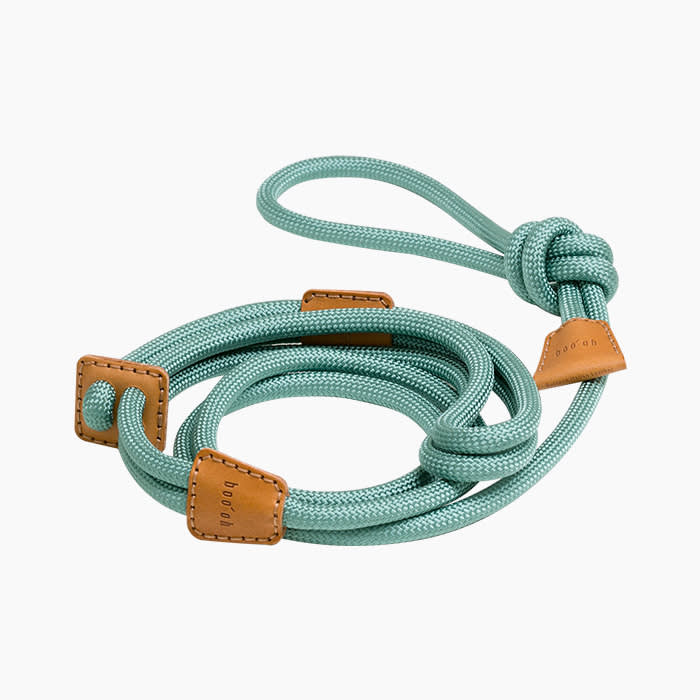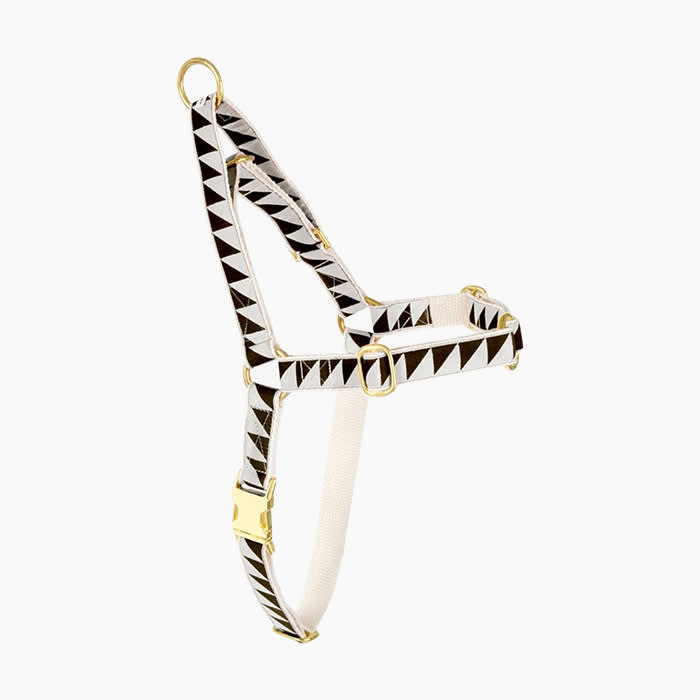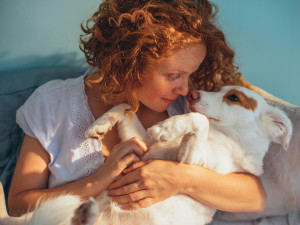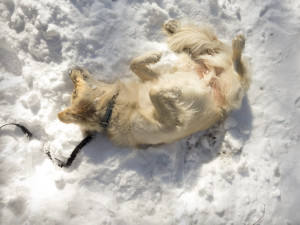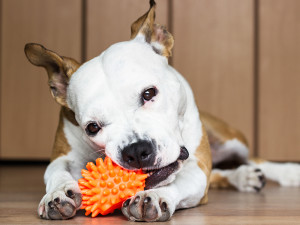7 Best Dog Harnesses For When Collars Don’t Cut It
Experts pick the best harnesses for every kind of dog – from flat-faced breeds to escape artists
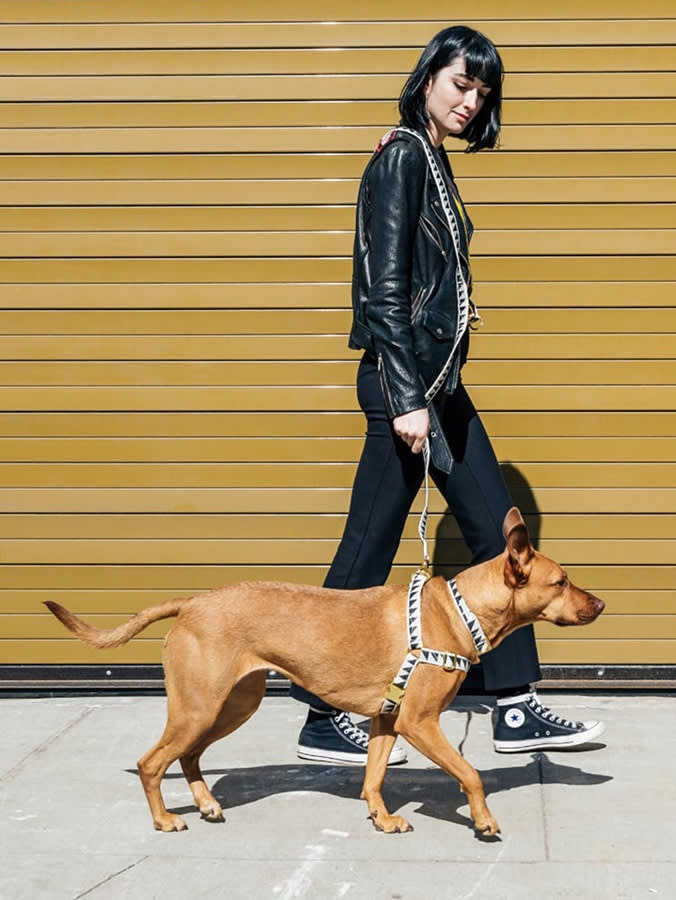
share article
All dog parents know (or quickly find out) that certain life hacks are essential to raising your pup. Sometimes those life hacks are simple products that become so important to you and your pet that you latch on to them like a toddler with a stuffed animal.
This is especially true when you’re on a walk together and exposed to all the dangers of the outside world: loud noises, cars zooming past, power walkers who don’t respect your dog’s boundaries. That’s where a harness comes in handy; it can give you more control over your pup’s behaviour while releasing them from the restriction of many traditional collarsopens in a new tab.
There’s a lot to consider before investing in one, though. Vet Dr John Iovino advises looking for a first-time harness by “paying attention to size“ and, with younger dogs especially, “getting something adjustable and they can grow into“. From there, he says it’s all about finding something that’s ”durable and sturdy”.
In terms of material, Annie Grossman, owner and co-founder of School For The Dogsopens in a new tab, recommends a harness with “velvet-lined underarm straps, which can reduce chafing”.
With size, material and security all at the top of the priority list, finding a solid harness is rapidly becoming a bit more of a Goldilocks scenario. Thankfully, we’ve asked the professionals what every dog owner should be looking for in a harness. Below, the seven harnesses that made the cut, handily broken down by our experts’ criteria.
Safety and fit
While it goes without saying that the best harness for a 2kg Terrier is probably not the best one for a Great Pyrenees, that doesn’t mean that the way you fit a harness to your pup isn’t worth examining. Just as you wouldn’t buy yourself a pair of shoes two sizes too big, you wouldn’t buy your dog a harness that hangs off them like a poorly tailored jacket (your vet will also tell you about the dangers of that).
Taking into account your dog’s potential for growth (are they in puppyhood or adulthood?), their temperament (are they anxious for attention or aloof?), and their nature (are they skittish opens in a new tabor calm?) is the most foolproof way to ensure their harness is correctly fitted.
Dr Iovino says “making sure that the harness is pretty snug“ is vital. He adds: “If it’s too loose, dogs can get spooked, and then they’re out of their collar or their harness, so it’s really important to make sure that it’s not too loose.”
On the other hand, he says that many dogs have been using the same harness or collar since they were first brought home. “I’ve had a few dogs grow into their harnesses, or even their collars, and clients don’t realise – and you go to feel it and it’s so tight. They grow fast, so it’s something to be aware of.”
Finding a happy medium between the control of a harness that fits snuggly and the comfort of a looser fit is something that can be established by the good old-fashioned two-finger test. “You still want to be able to fit two fingers between all the areas that the harness is contacting,” says Dr Iovino. Having a properly fitted harness will help prevent dogs from injury and removes the potential of escape.
Durability
Regardless of your and your pup’s levels of activity, having a harness that your dog can wear without wearing it down is paramount. A harness that’s machine washable or particularly sturdy – holding up to tugging, biting and handling – is a huge advantage. Considering that this harness will get as much, if not more, use than that old toy at the bottom of your dog’s bin, it’s not one to scrimp on.
Through her experience as a trainer, Vera Murri of physical and virtual training schools DogLife Hobokenopens in a new tab and Dogs Life Incopens in a new tab, has learnt that not every harness can be used for every occasion.
“Honestly, there is no size that fits all. It all depends on the dog or the puppy. It all depends on the size and the breed and if they're pulling on a harness or the lead or if they’re walking nicely,” she says.
Front vs back lead attachment
Where your dog’s lead clips on their harness is mostly a matter of personal preference, but the options each have distinct advantages and disadvantages. For example, a front clip effectively allows you to lead stubborn, walk-resistant dogs forwards, but it’s a particularly terrible idea for small dogs who are lower to the ground and will cause the lead to drag.
Dr Iovino recommends looking for a harness with a back attachment. “It’s just more practical when they walk and sniff, especially if you have a short dog. It’s a lot easier to keep the lead above ground and just a little bit of tension when it’s hooked on the back than the front,” he says.
Murri also makes a case for when a dual-clip harness may be beneficial: “My favourite harness, and the one that I use with my dog, is the Freedom harness. I like the harness because it has two points of attachment. It has one on the chest and one in the back. The one in the back has a martingale on it, which has a little loop that gets tighter every time the dog pulls so it makes it harder for the dog to slip out of it.”
Over the head vs step-in
Getting your dog in their harness shouldn’t be complicated, and if it feels like you’re untangling a necklace, there’s a good chance it’s not the most streamlined design. While the choice is entirely yours, many vets recommend introducing your dog to the concept of a harness before you begin your hunt for ’the one’.
“I would just expose the dog to a normal basic harness at first,” says Dr Iovino. “My dog just kind of knows now. She feels the collar part go over her head and instantly lifts her leg. If you just do that repetition on a basic harness, getting it on and off should be just as easy.”
From there, you can choose the harness to your and your pup’s liking – whether that is one that is placed over their head, clips on after being slipped on the legs, or snapped and Velcroed on the chest.
While Murri doesn’t have a preference towards any particular method, she warns about the dangers of step-in harnesses. “I mean the easiest one obviously is the step-in harness, but the problem with that is if you have a fearful dog who gets scared of something, they start pulling away, and they can slip out of that harness really easily,” she warns. ”Before you even realise, the dog is going to be gone.”
Best harnesses
Best for colour
Best comfort fit
Best escape-proof option
Best for tuggers
Best calming harness
Best fashion-forward harness
Best sustainable choice

Avery Felman
Avery is a writer and producer. She has written for numerous publications, including Refinery29, BuzzFeed, and V Magazine. When she’s not at her computer, you can find her reading, practicing her Greek on Duolingo, and delving into the Sex and the City discourse. She lives in Brooklyn, New York with her husband and their cat, Chicken, who rules with an iron fist.
Related articles
![A woman holding her dog close.]() opens in a new tab
opens in a new tabFYI, Your Dog Can’t Stand When You Do These 7 Things
Trust me, I’m a dog trainer
![Winterizing your dog's coat - Dog laying in the snow.]() opens in a new tab
opens in a new tabNatural Remedies for Dry Skin: How to Help Dry Skin on Dogs
Spoiler: the ingredients are probably already in your cupboard
![Happy golden retriever dog on a walk with owner in woodsy yellow and orange fall setting with leaves on the dirt trail.]() opens in a new tab
opens in a new tabHome Remedies for Dog Joint Pain Relief
DIY ways to help your pup cope with joint pain
![Dog chewing spiked orange toy at home]() opens in a new tab
opens in a new tab6 Ways to Keep Your Dog Entertained While You’re At Work
Don’t hit pause on your pet’s playtime – these solo activities will help 9–5 fly by for them
![A woman walking with her dog at golden hour.]() opens in a new tab
opens in a new tabDaylight Saving Time Confuses Pets, Too
Animal behaviourist Karen London on how ‘springing forward’ causes your dog or cat to lose sleep, too
